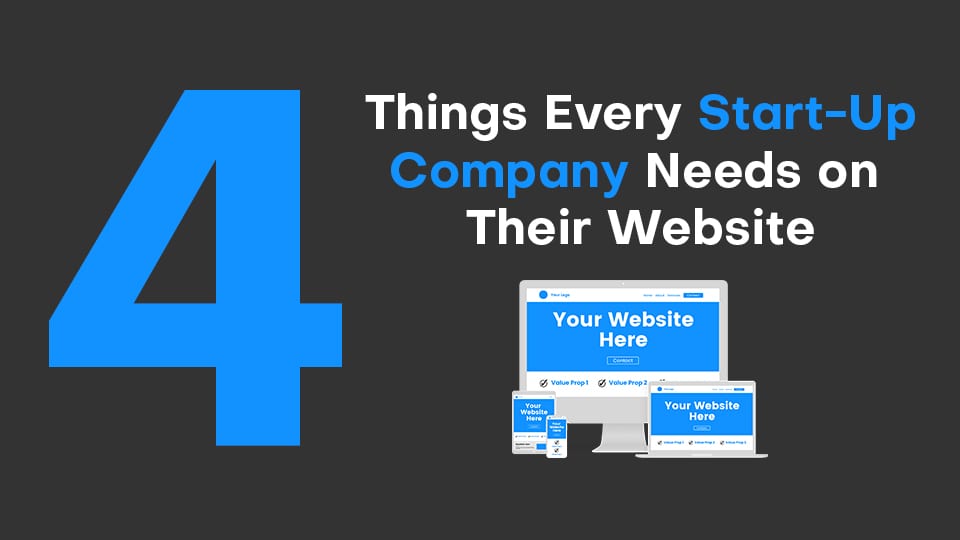When it comes to sharing videos online, you have two main options: embedding or linking. But what does embedding video mean? It is the process of integrating a video directly onto your website. This method allows viewers to watch your video without leaving your site.
Embedding videos has its advantages and disadvantages. By embedding, you ensure user convenience. Your audience can view the content without clicking a link and visiting another website. It’s a seamless, more integrated experience.
Ready to dive deeper? Our guide will explore the pros and cons of both embedding and linking. This will help you make an informed decision for your website. Stay tuned; this information could be a game-changer for your online presence!
Embedded Videos: Advantages and Benefits
Embedding a video, in essence, means incorporating it directly onto a web page using an embed video code provided by YouTube which is a popular video hosting platform preferred by bloggers. This method allows the video content to live on your website rather than directing visitors to an externally hosted site.
- The immediate advantage of embedding is the seamless user experience it offers. Instead of clicking a static photo or a text link and then being redirected to another page or a pop-up window, the audience can view the video content right on your landing page. This keeps your audience engaged on your site, potentially increasing your web traffic and reducing bounce rates.
- Quality is another significant benefit when embedding videos. You are assured of the video’s quality when you use the video embed code from a popular video platform. These platforms often offer higher-quality videos than the standard upload on a CMS platform or a website builder.
- Embedded videos offer a range of modern features that greatly enhance the viewer’s experience. For instance, YouTube overlays provide interactive elements that allow users to engage with the video content in various ways. These overlays can include clickable links, call-to-action buttons, and more enabling a more immersive and interactive viewing experience.
- Another key advantage of embedding videos is the SEO benefits it brings. Having video content on your webpage can improve your search results ranking. Google algorithms favor pages with mixed media content, including videos.
Embedded Videos: Potential Limitations and Drawbacks
While embedding videos directly onto a web page brings with it several benefits, it is not without its potential pitfalls.
- One significant drawback of using the embed option is the reliance on an external video hosting platform. You’re essentially trusting the video hosting service to maintain the video quality, availability, and performance.
- When you embed a video from a video hosting site like YouTube or Vimeo, you’re subject to their terms and conditions. This can limit your control over the video content. For instance, YouTube embed videos may include ads, affecting the viewer’s experience and potentially interrupting the flow of your content.
- Another potential drawback is the effect on your web page’s bandwidth. Video content, especially high-quality videos, can consume significant bandwidth. This could potentially slow down your webpage, especially if multiple videos are embedded on a single page.
- Embedded videos can also pose challenges when it comes to privacy controls. Depending on the video hosting platform, you may have limited control over who can view your videos and how they can interact with them.
- Finally, embedding videos can sometimes be a technical challenge. To embed a video, you need to copy the video’s embed code from the video hosting site and paste it into your web page’s HTML code. It can be annoying if you’re unfamiliar with HTML or your website builder doesn’t support this feature.

Linked Videos: Advantages and Benefits
Just as video embedding offers unique advantages, so does linking to videos. In this context, linking refers to providing a video’s URL or a clickable text that directs your site visitors to the video content hosted on an external site like a video hosting platform.
- One primary advantage of linking to videos is the simplicity it offers. Unlike the process of embedding a video, which requires dealing with embed codes and possibly tampering with your web page’s HTML code, linking is straightforward. You simply need to copy the video’s URL from the video hosting site and paste it into your online content or click the paper airplane icon to share it directly. This is particularly beneficial if you’re unfamiliar with HTML or your website builder doesn’t support video embedding.
- Linking to videos also reduces the load on your web page’s bandwidth. Since the video content is hosted on an external site, your page doesn’t have to load the video, ensuring a smoother experience for your audience. This is especially important if your website hosts a large amount of content or experiences high web traffic.
- Another benefit of linked videos is the potential for increased exposure on the video hosting platform. When you link to a YouTube video of your channel, for instance, viewers may explore other videos of yours on YouTube, increasing the chances of your video content being discovered by a broader audience.
- Video hosting platforms like YouTube and Vimeo also handle the technical aspects of video quality. They automatically adjust the video quality based on the viewer’s internet speed, ensuring a seamless viewing experience.
- Finally, linking to videos can offer more flexibility in terms of video format. While some video hosting sites may limit the formats for embedded videos, linking typically supports a wider range of video formats.
Linked Videos: Potential Limitations and Drawbacks
While linking to videos has its own advantages, it’s important to understand the potential limitations and drawbacks of this method.
- One of the primary challenges with using linked videos is that it takes your site visitors away from your own website. When a user clicks on a linked video, they are directed to the video hosting platform where the video is hosted, like YouTube or Vimeo. This could potentially lead to a loss in web traffic as viewers may become engaged with other videos or content on the video hosting site and not return to your site.
- Another drawback is the lack of control over the video’s presentation. When you link to a video, you cannot customize the title, thumbnail, or video’s preview to align with your branding. Additionally, most video hosting platforms watermark videos, which could detract from your content’s aesthetic appeal.
- Privacy can also be a concern when linking to videos. Depending on the video hosting service’s privacy settings, you may have limited control over who can view your videos. Moreover, some video hosting sites may display ads before or during your video, impacting the viewer’s experience and potentially interrupting your content.
- Linking to videos also misses out on the SEO benefits that embedding videos offer. Search engines favor pages with mixed media content and may prioritize pages with embedded videos over those with linked videos in search results.
Impact on User Experience (UX) for Embedded vs. Linked Videos
When discussing video marketing strategies, it’s crucial to consider the impact on user experience (UX). Whether you embed videos or link to them can significantly affect how your audience interacts with your online content.
- Embedding a video means placing it directly onto your web page using an embed code from a video hosting platform like YouTube or Vimeo. This option lets site visitors view the video content without leaving your website, providing a seamless user experience. Viewers can play, pause, and adjust the video quality from your web page, enhancing their engagement with your content.
- Moreover, an embedded player on your landing pages can improve your SEO benefits, as search engines prioritize pages with mixed media content. However, the UX can be affected by certain drawbacks. For instance, pop-up ads common in YouTube embed videos can interrupt the viewing experience. Also, the page’s bandwidth may limit higher-quality videos, leading to buffering or lower video quality.
- On the other hand, linking to videos involves directing users to the hosted site via the video’s URL. The primary advantage here is the simplicity of adding videos to your content. You don’t need to wrestle with HTML code or a complex website builder; simply click the paper airplane icon to share the video’s code.
- However, this method has its UX drawbacks. When a site visitor clicks on a video link, they are redirected away from your website, potentially impacting your web traffic. While this gives them access to the full features of the video hosting platform, it also exposes them to external content, including ads and other videos, which can distract them from your content.
- Furthermore, linked videos miss out on the opportunity to customize the video’s title, thumbnail, and preview, limiting your ability to create a cohesive brand experience. Also, viewers with slower internet connections may experience buffering or a drop in video quality on the video hosting site.

SEO Implications of Embedded vs. Linked Videos
The choice between embedding videos or linking to them can have significant SEO implications. Search engines like Google prioritize pages with mixed media content, such as text, images, and videos.
Search Engine Interpretation of Embedded Videos
When you embed a video on your website, search engines interpret it as part of your website’s content. An embedded video can provide substantial SEO benefits, enhancing the overall user experience and encouraging viewers to spend more time on your site. This increased dwell time signals to search engines that your site provides valuable content, which can boost your search engine rankings.
Embedded video content also offers opportunities for optimizing SEO metadata. The video’s title, description, and tags can be tailored to include top-ranking keywords relevant to your content. This further enhances your SEO performance by making your content more discoverable to search engines.
Impact of Video Hosting Platforms
The choice of video hosting platform can also affect your SEO outcomes. Popular video hosting platforms, such as YouTube and Vimeo, are preferred by many content marketers due to their wide reach and user-friendly features. However, each platform has its unique pros and cons.
For instance, on certain videos, YouTube overlays ads, which can potentially distract viewers. On the other hand, the Vimeo custom video player gives you different controls over how your video appears. However, its features may be limited compared to YouTube.
SEO Considerations for Linked Videos
Linking to videos, on the other hand, may not provide the same SEO benefits as embedding. When you link to a video, search engines may not consider the video as part of your site’s content. Instead, they see it as an external link, which could limit the SEO value that the video adds to your page.
Moreover, when viewers click on a linked video, they are redirected away from your site and onto the video hosting platform. This can reduce dwell time on your site, which is a key factor that search engines consider when ranking web pages. These technical SEO factors play a large role in the overall experience a user receives when visiting your website.

Analyzing Engagement Metrics for Embedded and Linked Videos
Understanding engagement metrics is crucial when deciding between embedding or linking creative videos. These metrics provide valuable insights into how your audience interacts with your video content, helping you optimize your content marketing strategy.
Engagement Metrics for Embedded Video Content
When you embed a video, it becomes an integral part of your webpage. An embedded video lets your audience interact directly with your content without leaving your site. This can lead to increased dwell time, a key factor that search engines consider when ranking pages.
One advantage of embedding creative videos is the wealth of engagement metrics available. Most video hosting platforms preferred by content marketers, like YouTube and Vimeo, offer detailed analytics. These include views, average watch time, and audience retention rate.
Tracking Engagement Metrics for Linked Videos
On the other hand, tracking engagement metrics for linked videos can be more challenging. When viewers click on a linked video, they are redirected to the video hosting platform where the video resides. This means they leave your site, making tracking their interaction with your video content difficult.
However, some popular video hosting platforms provide basic analytics for linked videos. These might include the number of clicks the video link has received and the time spent watching the video.
The best video hosting sites offer free live streaming features, allowing you to monitor viewer engagement in real-time. However, these metrics may not provide as comprehensive an understanding of viewer behavior as the analytics offered for embedded videos.
Examples of Effective Video Integration Methods
Incorporating videos into your content marketing strategy can significantly enhance user engagement and SEO performance. Here are some examples of effective video integration methods that have proven successful across various industries.
Tutorial and How-to Videos
Many brands, particularly those in the tech and DIY sectors, recognize the value of directly embedding tutorials or how-to videos on their product pages. By doing so, they provide users instant and convenient access to valuable and relevant content without the need to navigate away from the page. This not only enhances user experience but also increases engagement and satisfaction.
For instance, software companies often go the extra mile by incorporating instructional videos within their frequently asked questions (FAQ) or support sections. This thoughtful approach ensures that users receive textual guidance and benefit from visual demonstrations, enabling them to easily overcome common queries or issues they may encounter.
Testimonial Videos
Customer testimonials are incredibly powerful tools for building trust and credibility. By showcasing these genuine videos on their home pages or dedicated testimonial pages, companies create an opportunity for prospective customers to hear directly from satisfied clients.
This direct interaction enhances the brand’s reliability and strengthens the connection between the business and its target audience. Moreover, embedding customer testimonials on the website eliminates the need for customers to navigate away to external platforms, ensuring a seamless and immersive user experience.
Product Demonstration Videos
Retail and e-commerce sites often leverage the power of product demonstration videos by seamlessly embedding them on their product pages. These captivating videos vividly showcase the product in action, allowing potential buyers to envision its practicality and reap its numerous benefits.
This strategic approach enhances customer engagement and bolsters conversion rates by equipping customers with a comprehensive understanding of the product’s value proposition and unique features. By harnessing the persuasive nature of visual storytelling, businesses can captivate their audience and drive more successful transactions.
Conclusion
In the dynamic landscape of content marketing, understanding what embedding video means is pivotal for optimizing user engagement and SEO outcomes. The choice between embedding videos directly onto your site or linking to them on external platforms hinges upon your specific marketing objectives and audience behavior.
Embedded videos, associated with increased dwell time and richer engagement metrics, become an integral part of your webpage, while linked videos lead users to an external platform, potentially offering distinct promotional advantages.
In essence, the strategic integration of video content, with a discerning balance between embedded and linked videos, can be the key to unlocking enhanced user interaction, deeper engagement, and superior SEO performance.




